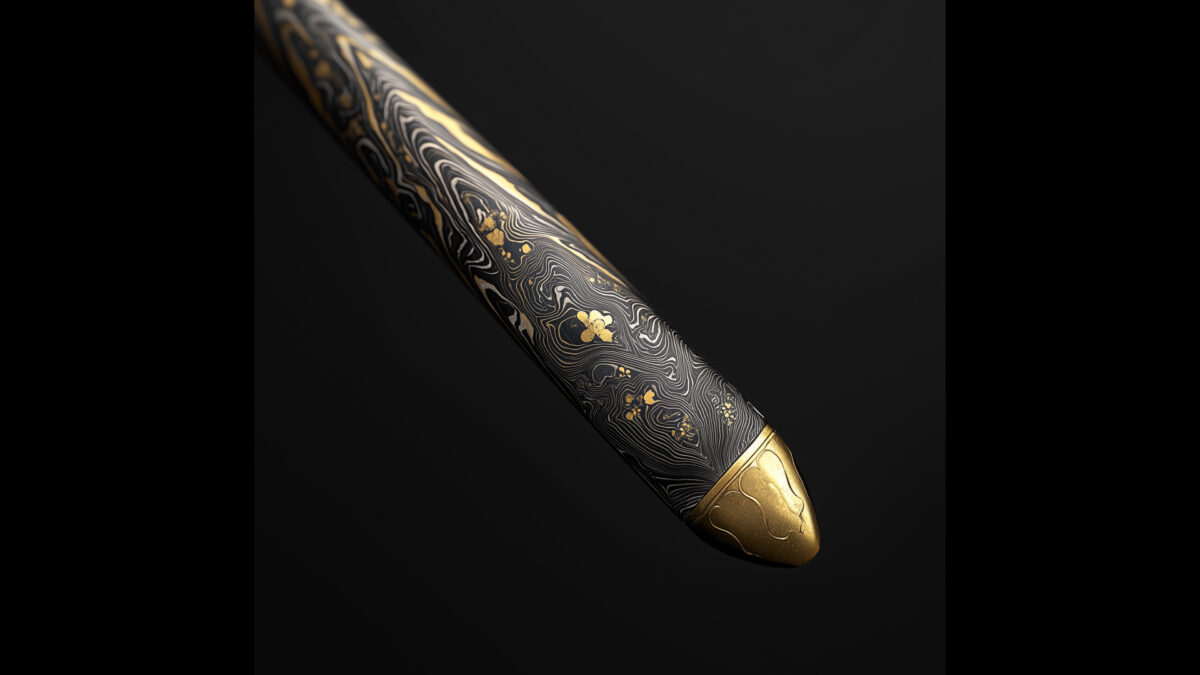- 1. Introduction
- 2. Tools for Lamination & Bonding
- 3. Tools for Carving & Shaping
- 4. Tools for Finishing & Polishing
- 5. Tools for Coloring & Surface Treatment
- 6. Auxiliary Tools & Workshop Equipment
- 7. The Artisan’s Philosophy of Tools
- 8. Fusion of Tradition & Modern Technology
- 9. Summary: Tools as the Pulse of Patterns
- 10. Notes on Uncertainties
- 11. References
Table of Contents
- Introduction
- Tools for Lamination & Bonding
- Flat Metal Sheets (Materials)
- Pickling/Cleaning Equipment
- Clamps & Fixing Tools
- Furnaces: Charcoal, Kiln, Electric Furnace
- Tools for Carving & Shaping
- Flat / Half‑Round / Round Files
- Carving Chisels (Togane)
- Rotary Tools (Dremel)
- Grinders for Rough Shaping
- Tools for Finishing & Polishing
- Waterproof Sandpaper
- Burnishers, Buffs, Dremel Flaps
- Polishing Compounds (Blue, White, Red Sticks)
- Tools for Coloring & Surface Treatment
- Niiro Coloring Pot & Chemicals
- Ultrasonic Cleaner
- Auxiliary Tools & Workshop Equipment
- Loupe / Microscope
- Annealing Furnace
- Metal Flat Surface Plate
- Vise
- Calipers & Micrometer
- Safety Gear (Polishing Mask, Goggles)
- The Artisan’s Philosophy of Tools
- Fusion of Tradition & Modern Technology
- Summary: Tools as the Pulse of Patterns
- Notes on Uncertainties
- References
1. Introduction
Mokume‑Gane is a complex and subtle craft comprised of lamination, bonding, carving, finishing, and coloring. Each stage relies on time-honored traditional tools. This glossary presents over 20 essential tools categorized by their purpose, with practical descriptions to highlight their roles in bringing Mokume‑Gane to life.
2. Tools for Lamination & Bonding
Flat Metal Sheets (Materials)
Used for lamination: thin sheets (approx. 0.3–2 mm) of silver, copper, shakudō, shibuichi, gold, etc.
Pickling / Cleaning Equipment
Essentials for removing oxidation and oils:
- Pickling solutions (dilute sulfuric acid or baking soda)
- Mesh trays, stainless tongs, acid-resistant containers
Clamps & Fixing Tools
Secure layered sheets to prevent misalignment:
- C‑clamps (small/medium)
- Annealed wire for binding
- Custom clamps or personalized frames (tradition-dependent)
Furnaces: Charcoal, Kiln, Electric Furnace
Used for high-temperature lamination (approx. 800–950 °C):
- Compact electric furnaces (precise control)
- Traditional charcoal forges
- Torches for localized heating
3. Tools for Carving & Shaping
Flat / Half‑Round / Round Files
Basic tools for pattern exposure and shaping:
- Flat file: creates uniform surfaces
- Half-round: fits curves and recesses
- Round: ideal for spot patterns
Carving Chisels (Togane)
Used to accentuate or add detail:
- Types: flat, single-beveled, fine chisels
- Often handmade or self-sharpened
Rotary Tools (Dremel / Micro Motor)
For detailed carving:
- Uses carbide and diamond burs
- RPM range: 3,000–25,000
Grinders for Rough Shaping
Post-lamination shaping:
- Disc or belt-style
- Use with cooling precautions to avoid discoloration
4. Tools for Finishing & Polishing
Waterproof Sandpaper
Used in polishing stages:
- Common grits: #400–#2000
- Flexible sheets preferred for curves
Burnishers, Buffs, Dremel Flaps
- Metal burnishers for targeted shine
- Cloth buffs for overall surface finish
- Felt buffs with polishing compounds
Polishing Compounds
- Blue: coarse polishing
- White: intermediate smoothing
- Red: mirror finish
5. Tools for Coloring & Surface Treatment
Niiro Coloring Pot & Chemicals
Used in traditional Japanese patination:
- Copper or stainless steel pots
- Ingredients vary: copper sulfate, vinegar, salt, baking soda
Ultrasonic Cleaner
Removes fine debris after polishing:
- Effective with water and mild detergent
6. Auxiliary Tools & Workshop Equipment
| Tool | Purpose |
|---|---|
| Loupe / Microscope | Pattern inspection |
| Annealing Furnace | Metal softening |
| Flat Surface Plate | Alignment and reference |
| Vise | Securing blocks during work |
| Calipers / Micrometer | Measuring thickness and carving depth |
| Safety Gear | Masks, goggles for protection |
7. The Artisan’s Philosophy of Tools
Some prefer traditional hand tools, others modern precision equipment. Many modify or handcraft their own tools. Tools reflect the artisan’s thinking and technique.
8. Fusion of Tradition & Modern Technology
- 3D CAD for design
- CNC milling for rough shaping
- Hand finishing remains essential
9. Summary: Tools as the Pulse of Patterns
Tools are not just instruments—they are extensions of the artisan’s intent. Their sharpness, angle, and texture directly influence pattern expression.
10. Notes on Uncertainties
- Tool types and usage vary across regions and workshops
- Many techniques are undocumented and passed on orally
11. References
See the original Japanese source for full citations.

